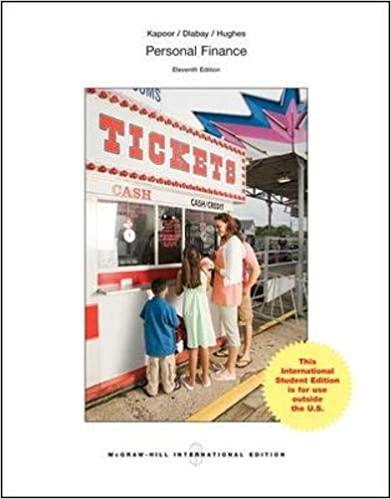Answered step by step
Verified Expert Solution
Question
1 Approved Answer
B. negatively; positively: C. positively; negatively: D. positively; positively 18. According to the put-call parity theorem, the payoffs associated with ownership of a call option

B. negatively; positively: C. positively; negatively: D. positively; positively 18. According to the put-call parity theorem, the payoffs associated with ownership of a call option can be replicated by A. shorting the underlying stock, borrowing the present value of the exercise price, and writing a put on the same underlying stock and with the same exercise price B. buying the underlying stock, borrowing the present value of the exercise price, and buying a put on the same underlying stock and with the same exercise price C. buying the underlying stock, borrowing the present value of the exercise price, and riting a put on the same underlying stock and with the same exercise price D. shorting t buying a put on the same underlying stock and with the same exercise price derlying stock, lending the present value of the exercise price, and 19. A call option on Juniper Corp. stock with an exercise price of $75 and an expiration date 1 year from now is worth $3 today. A put option on Juniper Corp. stock with an exercise price of $75 and an expiration date 1 year from now is worth $2.50 today. The risk-free rate of return is 8%, and Juniper Corp. pays no dividends. The stock should worth be today. A. $69.73; B. $71.69; C. $73.12; D. $75.25; E. $77.80 0. You calculate the Black-Scholes value of a call option as $3.50 for a stock that does pay dividends, discrepancy is that either the option is model is too but the actual call price is $3.75. The most likely explanation for the or the volatility you input into the overvalued and should be written; low: B. undervalued and should be written; low C. overvalued and should be purchased; high D. undervalued and should be purchased; high 1. In order for a binomial option price to approach the Black Scholes price A. the number of subintervals must increase substantially B. the volatility must be low; C. the volatility must be high; D. the probability of each subinterval needs to be similar to the stock's standard deviation; E. the interest rate needs to increase
Step by Step Solution
There are 3 Steps involved in it
Step: 1

Get Instant Access to Expert-Tailored Solutions
See step-by-step solutions with expert insights and AI powered tools for academic success
Step: 2

Step: 3

Ace Your Homework with AI
Get the answers you need in no time with our AI-driven, step-by-step assistance
Get Started


